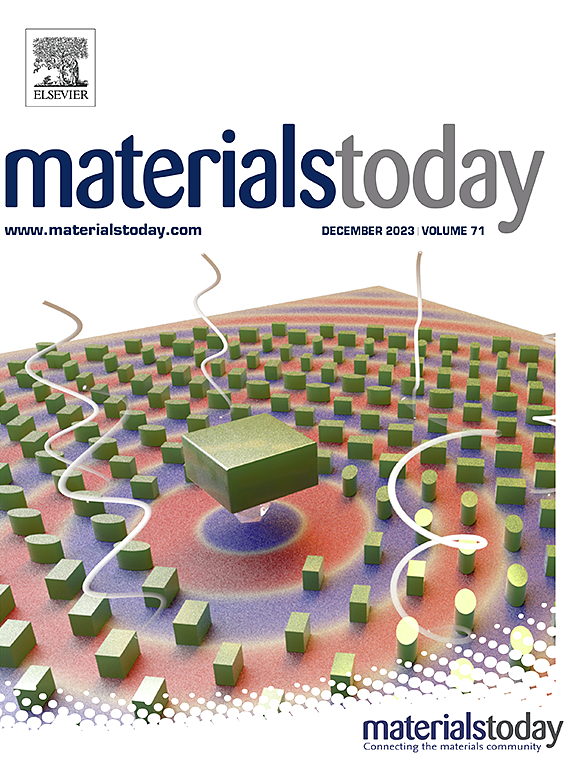Rutile germanium dioxide: An emerging ultrawide bandgap semiconductor for power device applications – A review
IF 21.1
1区 材料科学
Q1 MATERIALS SCIENCE, MULTIDISCIPLINARY
引用次数: 0
Abstract
In recent years, the demand for wide and ultrawide bandgap (UWBG) semiconductors for advanced power electronics and optoelectronic devices has surged. Materials in this class, including GaN, AlN, AlGaN, diamond, c-BN, Ga2O3, and emerging candidates like rutile GeO2, are of particular interest due to their potential for high-efficiency, high-power applications. Rutile GeO2, with a bandgap around 4.7 eV, possesses excellent electrical, optical, mechanical, and thermal properties, making it a strong contender among UWBG semiconductors. This review examines rutile GeO2’s structural, electronic, and optical characteristics, focusing on films deposited using methods such as MOCVD, MBE, CVD, and sputtering. The rutile phase of GeO2 demonstrates notable versatility, as it can be doped for both n- and p-type conduction with elements like Al, In, and As. Recent advancements have enabled the growth of high-quality, epitaxial rutile GeO2 films, broadening its potential applications. Additionally, large-scale rutile GeO2 can be produced through melt and flux methods, an advantage for commercial scalability. These qualities highlight rutile GeO2’s promise as a next-generation material for power devices and optoelectronics, meriting increased research and investment to fully leverage its capabilities.

金红石二氧化锗:一种用于功率器件的新兴超宽带隙半导体-综述
近年来,用于先进电力电子和光电子器件的宽和超宽带隙(UWBG)半导体需求激增。这类材料,包括GaN, AlN, AlGaN,金刚石,c-BN, Ga2O3,以及新兴的候选材料,如金红石GeO2,由于它们具有高效,高功率应用的潜力而特别令人感兴趣。金红石GeO2的带隙约为4.7 eV,具有优异的电学、光学、机械和热性能,使其成为UWBG半导体的有力竞争者。本文综述了金红石GeO2的结构、电子和光学特性,重点介绍了采用MOCVD、MBE、CVD和溅射等方法沉积的薄膜。GeO2的金红石相表现出显著的多功能性,因为它可以掺杂Al, In和as等元素进行n型和p型导电。最近的进展使高质量,外延金红石GeO2薄膜的增长,扩大了其潜在的应用。此外,大规模的金红石GeO2可以通过熔体和助熔剂方法生产,这是商业可扩展性的优势。这些品质突出了金红石GeO2作为下一代功率器件和光电子材料的前景,值得增加研究和投资以充分利用其能力。
本文章由计算机程序翻译,如有差异,请以英文原文为准。
求助全文
约1分钟内获得全文
求助全文
来源期刊

Materials Today
工程技术-材料科学:综合
CiteScore
36.30
自引率
1.20%
发文量
237
审稿时长
23 days
期刊介绍:
Materials Today is the leading journal in the Materials Today family, focusing on the latest and most impactful work in the materials science community. With a reputation for excellence in news and reviews, the journal has now expanded its coverage to include original research and aims to be at the forefront of the field.
We welcome comprehensive articles, short communications, and review articles from established leaders in the rapidly evolving fields of materials science and related disciplines. We strive to provide authors with rigorous peer review, fast publication, and maximum exposure for their work. While we only accept the most significant manuscripts, our speedy evaluation process ensures that there are no unnecessary publication delays.
 求助内容:
求助内容: 应助结果提醒方式:
应助结果提醒方式:


